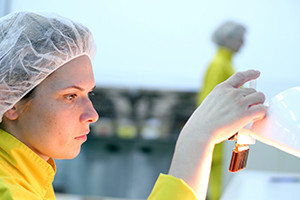Microbiology studies extremely small organisms found in our world, including bacteria, viruses, fungi and protozoa. We begin with microscopes as we investigate their lenses and usage. This course teaches you definitions and how to group microorganisms and outlines the history and foundation of microbiology. We provide specific definitions like ‘prokaryotic’ and ‘eukaryotic’ cells, which make up organisms, and explain their structure and differences. We go through metabolic processes and illustrate why enzymes are essential for living things. This course introduces you to microbes, what they need to survive and grow and the phases of bacterial growth. This helps you discover how we grow and measure microbes and what kind of chemical agents can control them.
This course takes a look at the different types of prokaryotes found in the world, which are divided into different types of archaea and bacteria. Classifications are everywhere in microbiology and we expose you to various types of phyla and eukaryota: fungi, algae, protozoa and slime and water moulds. We then cover viruses, viroids and prions and unpack the difference between deoxyribonucleic acid (DNA) and ribonucleic acid (RNA) virus entry in animals and the diseases that threaten plants. We show you how microbes infect their hosts and how medical professionals try to prevent infections from spreading. We help you study how microbial diseases are acquired, which includes covering the different forms of infectious diseases and their transmission. Do you know how your immune system works to fight off infections? Do you know what cells help to prevent you from falling ill? These basic and interesting questions are answered during this course. The immune system is a complex and amazing system worth studying in detail and we establish its purpose and how antibodies boost your body’s protection.
Our attention then moves on to the nature and purpose of vaccines. We begin with the history of vaccine development and the process whereby a vaccine protects the human body. We explain the concerns raised by the presence of microorganisms in our environment and look into their effect and the carbon, nitrogen and sulphur cycles. This course finishes with a look at the use of microorganisms and microbiology in the food industry and other sectors. This course provides a solid understanding of the basics when it comes to identifying the practical role of microorganisms, for example in developing vaccines. It will interest anyone who wants a zoomed-in view of the world around them as we offer a fascinating glimpse through the microscope.
What You Will Learn In This Free Course
View All Learning Outcomes View Less All Alison courses are free to enrol, study, and complete. To successfully complete this Certificate course and become an Alison Graduate, you need to achieve 80% or higher in each course assessment.
Once you have completed this Certificate course, you have the option to acquire an official Certificate, which is a great way to share your achievement with the world.
Your Alison certificate is:
- Ideal for sharing with potential employers.
- Great for your CV, professional social media profiles, and job applications.
- An indication of your commitment to continuously learn, upskill, and achieve high results.
- An incentive for you to continue empowering yourself through lifelong learning.
Alison offers 2 types of Certificate for completed Certificate courses:
- Digital Certificate: a downloadable Certificate in PDF format immediately available to you when you complete your purchase.
- Physical Certificate: a physical version of your officially branded and security-marked Certificate
All Certificate are available to purchase through the Alison Shop. For more information on purchasing Alison Certificate, please visit our FAQs. If you decide not to purchase your Alison Certificate, you can still demonstrate your achievement by sharing your Learner Record or Learner Achievement Verification, both of which are accessible from your Account Settings.











 Avg. Hours
Avg. Hours  Contains Video
Contains Video  CPD Accredited
CPD Accredited 
 Total XP:
Total XP: 
 Knowledge & Skills You Will Learn
Knowledge & Skills You Will Learn 







